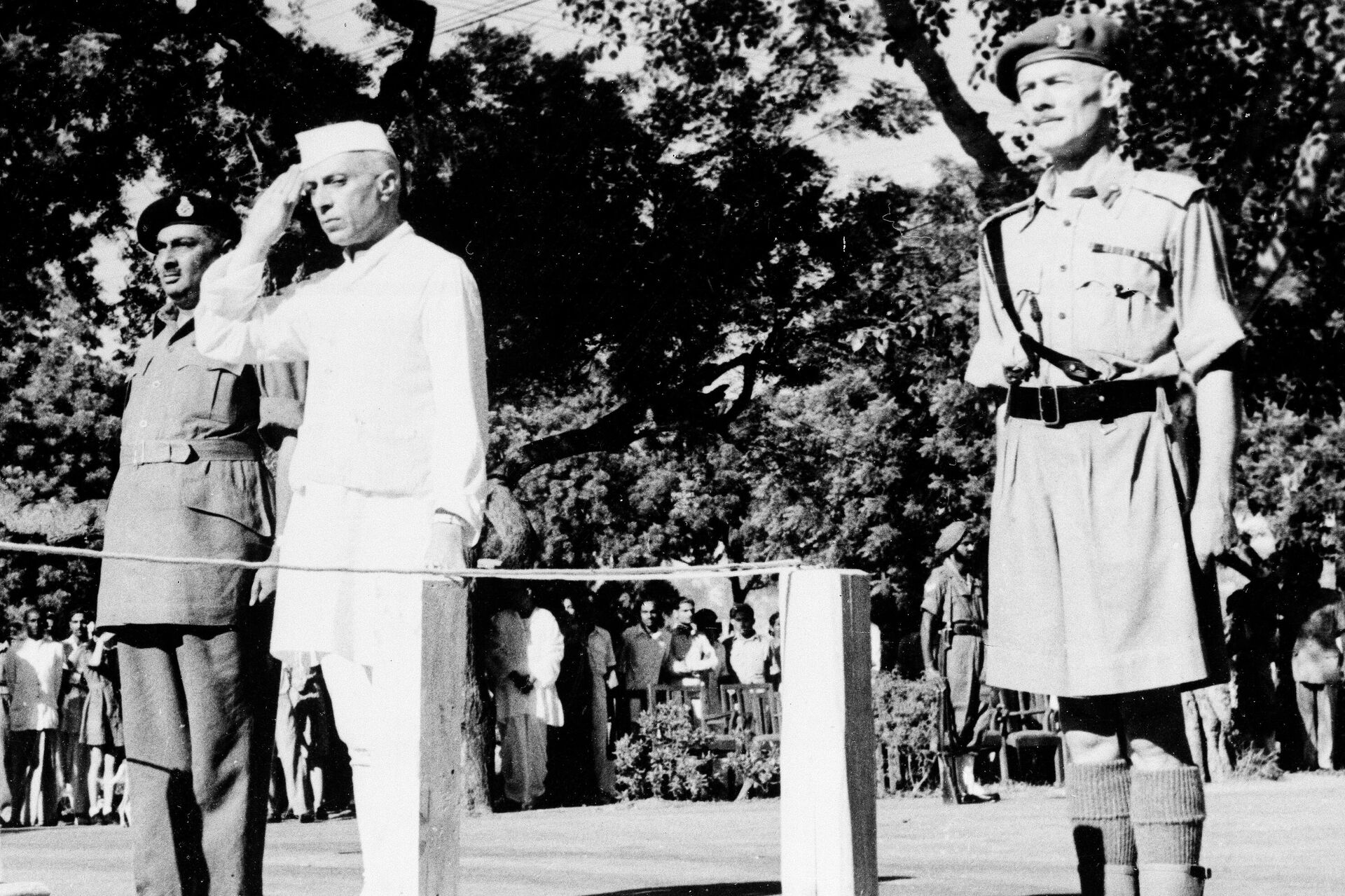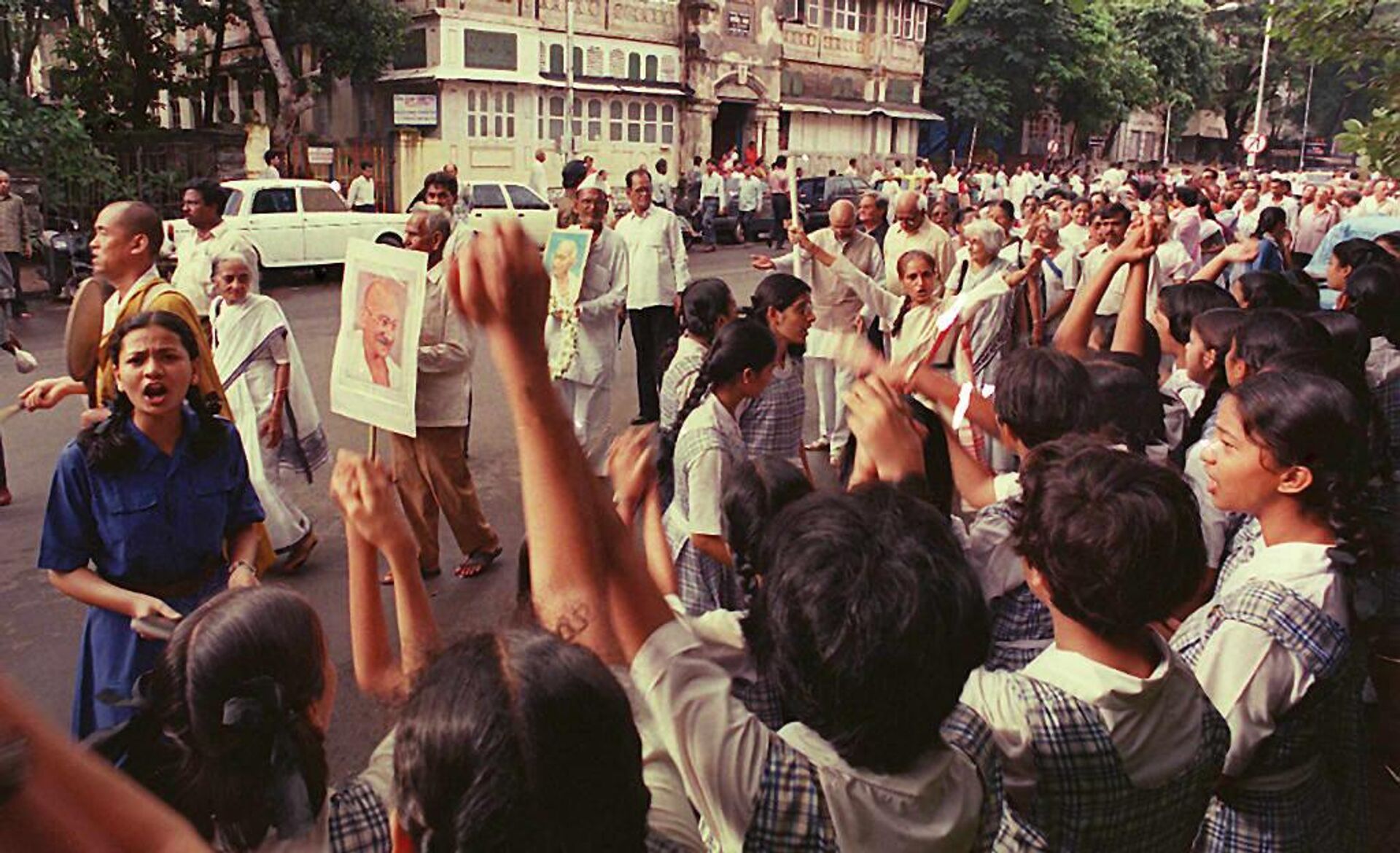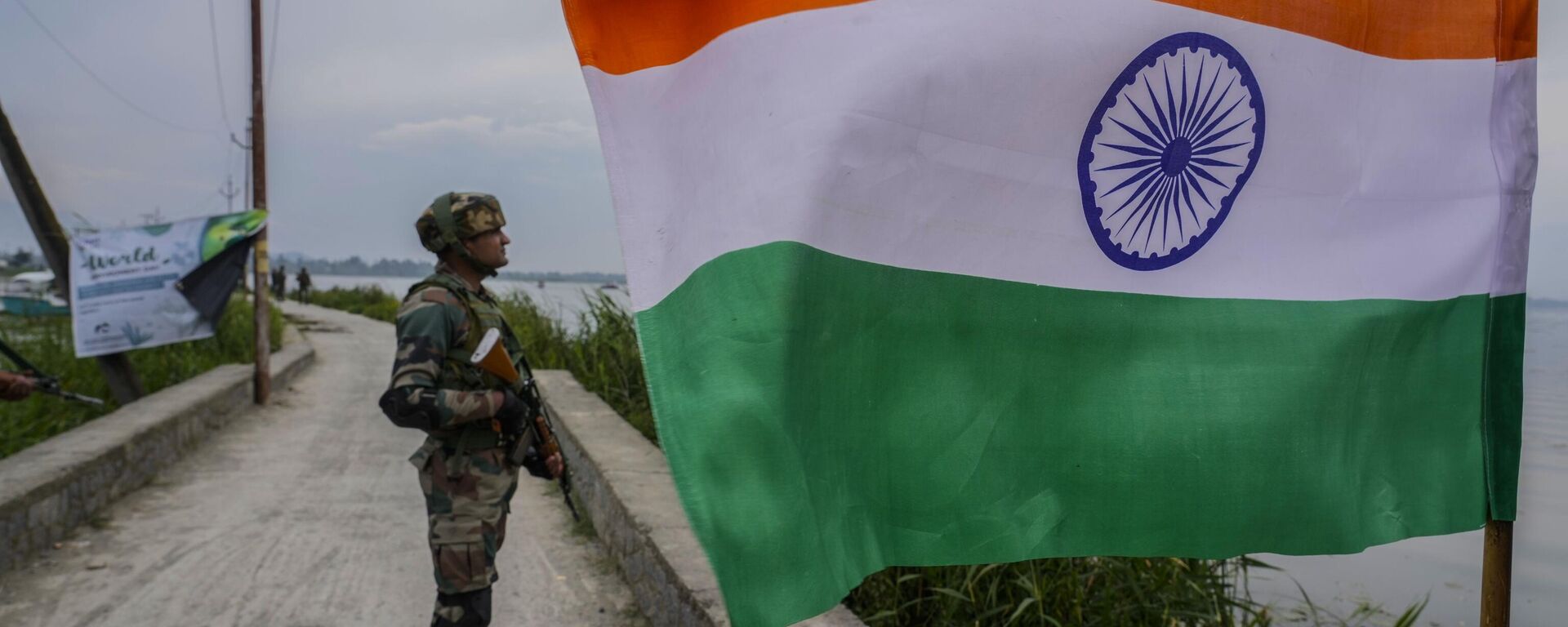Quit India Movement: Recounting India's Struggle for Independence

© AP Photo / Rafiq Maqbool
Subscribe
The Quit India Movement, also known as the August Movement, was a significant milestone in India's struggle for independence from British colonial rule.
The Quit India Movement, which took place during World War II, aimed to compel the British Raj to quit the Indian subcontinent, granting its inhabitants the long-awaited freedom.
It was a mass civil disobedience movement that galvanized millions of Indians from all walks of life to rise against the oppressive regime of the British imperialists.
Sputnik India takes a look back at how the August movement paved way for India's independence.
Historical Background of India's Struggle for Independence
India's quest for independence dates back to the 19th century when various reform movements, such as the Indian National Congress (INC), emerged to challenge British rule. The Indian National Congress, established in 1885, played a pivotal role in mobilizing Indians to fight for their rights and freedom. However, it was not until the early 20th century that the struggle gained significant momentum, with iconic Independence leaders like Mahatma Gandhi spearheading the nonviolent resistance movement.

Assam police women commandos display their skills on motorcycles on Independence Day in Gauhati, northeastern Assam state, India, Monday, Aug. 15, 2022.
© AP Photo / Anupam Nath
Causes of the Quit India Movement
The Quit India Movement was fueled by several factors that had been building up over the years:
the oppressive policies of the British Raj;
economic exploitation, and
the denial of basic civil liberties.
The failure of the Cripps Mission, which aimed to negotiate a settlement between the Indian National Congress and the British government, further fueled the discontent among Indians.
Additionally, the impact of World War II, the Indian National Army led by Subhas Chandra Bose, and the growing demand for self-rule also played pivotal roles in shaping the movement.
Key Players and Leaders of the Quit India Movement
The Quit India Movement witnessed the active participation of numerous influential leaders who played instrumental roles in mobilizing the masses and guiding the movement.
Mahatma Gandhi, the father of the Indian nation, encouraged nonviolence and civil disobedience as the guiding principles of the movement.

Jawaharlal Nehru salutes the flag as he becomes independent India's first prime minister on Aug. 15, 1947, during the Independence Day ceremony at Red Fort, New Delhi, India.
© AP Photo
Other prominent leaders included Jawaharlal Nehru, Sardar Vallabhbhai Patel, Maulana Abul Kalam Azad, and Rajendra Prasad. These leaders, along with countless others, inspired and motivated Indians to unite in their fight for freedom.
When Did the Quit India Movement Start?
The Quit India Movement unfolded in a series of events that spanned from its inception to its culmination.
On August 8, 1942, Mahatma Gandhi delivered his historic speech calling for the British to "Quit India." This marked the beginning of the movement, which was met with a brutal crackdown by the British authorities.
The subsequent months witnessed widespread protests, strikes, and acts of civil disobedience across the country.
The movement reached its peak in August 1942, but due to the ruthless suppression by the British, it gradually lost momentum by the end of 1943.
Objectives and Demands of the Quit India Movement
The Quit India Movement had clear objectives and demands that aimed to secure India's independence from British rule. These included the following demands placed before the British Raj:
relinquishing control and granting India its right to self-governance;
the immediate withdrawal of British forces from India;
the establishment of a constituent assembly to frame a new constitution; and
the formation of an interim government.
The movement also sought to address the social and economic issues plaguing the country, such as poverty, illiteracy, and discrimination.
Suppression of the Quit India Movement by the British Raj
The British authorities responded to the Quit India Movement with a ruthless crackdown. They arrested thousands of Indian leaders and activists, imposed strict censorship, and resorted to violence to suppress the uprising.
The British government saw the movement as a threat to their colonial authority and did not hesitate to use force to quell the protests. The repression unleashed by the British led to widespread violence, loss of life, and destruction of property.
Despite the harsh measures, the Quit India Movement left an indelible mark on the collective consciousness of the Indian people.
Impact and Significance of the Quit India Movement
The Quit India Movement had a profound impact on India's struggle for independence and the subsequent course of history. It intensified the demand for self-rule and brought the Indian independence movement to the forefront of the international stage.
The movement also highlighted the power of nonviolent resistance and civil disobedience as effective tools for social and political change.
Moreover, the Quit India Movement served as a unifying force that brought together people from diverse backgrounds and regions, fostering a sense of national identity and unity.

School children shout slogans 'Long live Gandhi'and 'Unite India" as Freedom fighters marched a two kilometer route holding portraits of Mahatma Gandhi to August Kranti Maidan (August Revolution Ground) on 09 August to commemorate the 'QUIT INDIA' movement which began on this day in the year1942, as India celebrates 50 years of independence.
© AFP 2023 SEBASTIAN D'SOUZA
The Quit India Movement is often compared to other movements for independence around the world, such as the American Revolution and the African independence movements. While each movement had its unique characteristics and context, they all shared a common goal – to liberate their respective nations from colonial rule. The Quit India Movement, like these other movements, demonstrated the resilience and determination of a people yearning for freedom and self-determination.
Legacy and Lessons Learned from the Quit India Movement
The Quit India Movement left a lasting legacy and imparted valuable lessons to future generations:
It showcased the power of mass mobilization, nonviolent resistance, and civil disobedience as effective means of bringing about social and political change.
The movement also emphasized the importance of unity and solidarity in the face of adversity.
Finally, it instilled a sense of pride and nationalism among Indians, inspiring subsequent generations to uphold the values of freedom, justice, and equality.
The Quit India Movement stands as a testament to the indomitable spirit of the Indian people and their unwavering commitment to freedom. It was a pivotal moment in India's struggle for independence, marking a turning point in the nation's history. The movement's objectives, demands, and the sacrifices made by countless individuals continue to inspire and guide the pursuit of justice, equality, and self-governance.
The Quit India Movement will forever be remembered as a defining chapter in India's journey towards independence and as a beacon of hope for oppressed people around the world.

